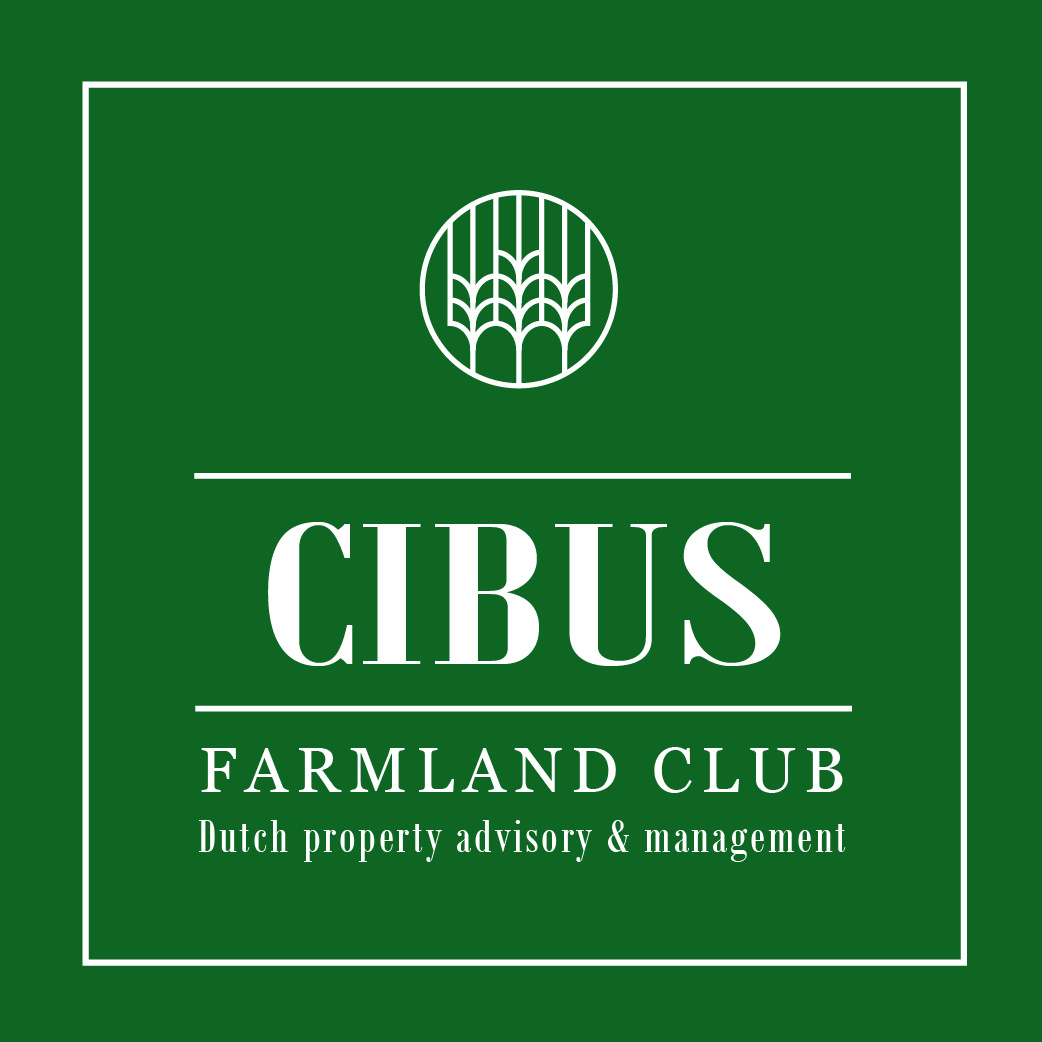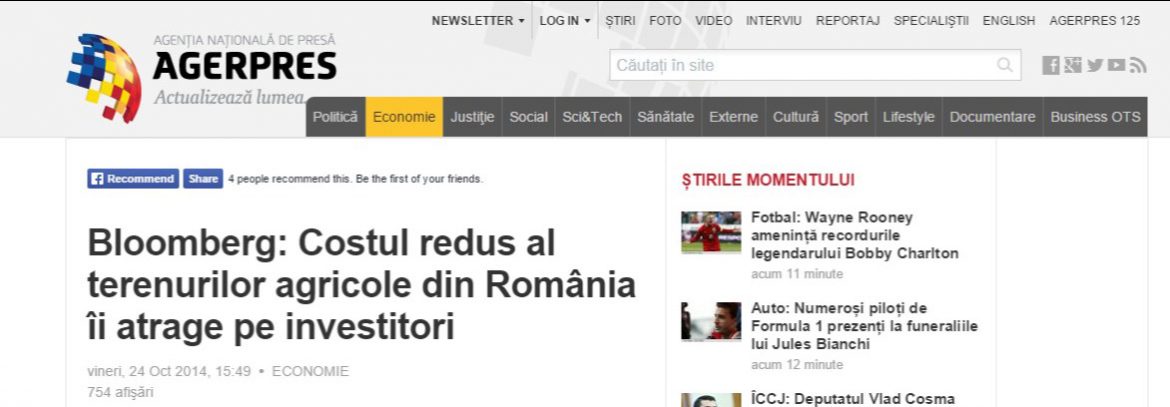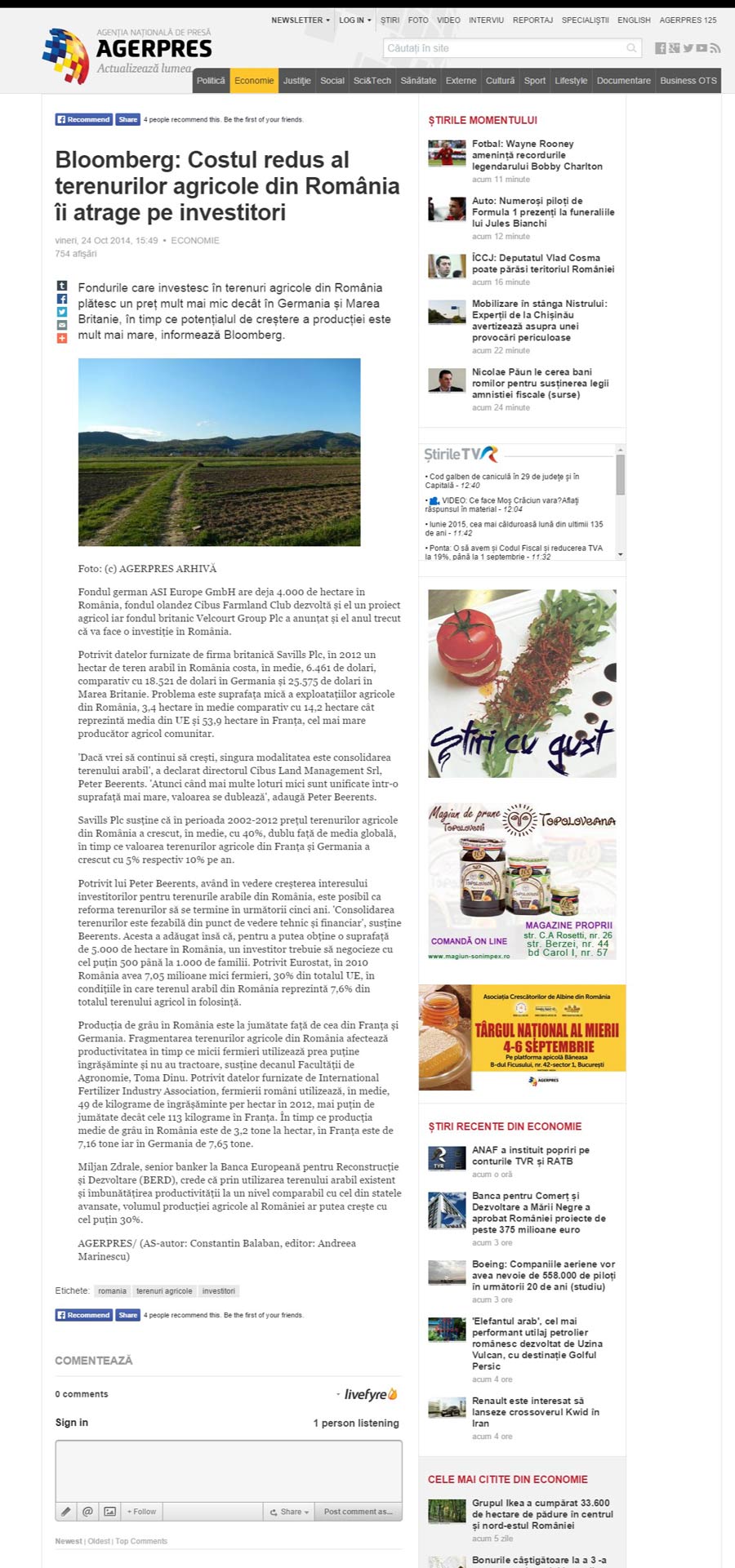Agerpres
Agerpres: Constantin Balaban
October 24, 2014
Link to article
Fondul german ASI Europe GmbH are deja 4.000 de hectare în România, fondul olandez Cibus Farmland Club dezvoltă şi el un proiect agricol iar fondul britanic Velcourt Group Plc a anunţat şi el anul trecut că va face o investiţie în România.
Potrivit datelor furnizate de firma britanică Savills Plc, în 2012 un hectar de teren arabil în România costa, în medie, 6.461 de dolari, comparativ cu 18.521 de dolari în Germania şi 25.575 de dolari în Marea Britanie. Problema este suprafaţa mică a exploataţiilor agricole din România, 3,4 hectare în medie comparativ cu 14,2 hectare cât reprezintă media din UE şi 53,9 hectare în Franţa, cel mai mare producător agricol comunitar.
‘Dacă vrei să continui să creşti, singura modalitatea este consolidarea terenului arabil’, a declarat directorul Cibus Land Management Srl, Peter Beerents. ‘Atunci când mai multe loturi mici sunt unificate într-o suprafaţă mai mare, valoarea se dublează’, adaugă Peter Beerents.
Savills Plc susţine că în perioada 2002-2012 preţul terenurilor agricole din România a crescut, în medie, cu 40%, dublu faţă de media globală, în timp ce valoarea terenurilor agricole din Franţa şi Germania a crescut cu 5% respectiv 10% pe an.
Potrivit lui Peter Beerents, având în vedere creşterea interesului investitorilor pentru terenurile arabile din România, este posibil ca reforma terenurilor să se termine în următorii cinci ani. ‘Consolidarea terenurilor este fezabilă din punct de vedere tehnic şi financiar’, susţine Beerents. Acesta a adăugat însă că, pentru a putea obţine o suprafaţă de 5.000 de hectare în România, un investitor trebuie să negocieze cu cel puţin 500 până la 1.000 de familii. Potrivit Eurostat, în 2010 România avea 7,05 milioane mici fermieri, 30% din totalul UE, în condiţiile în care terenul arabil din România reprezintă 7,6% din totalul terenului agricol în folosinţă.
Producţia de grâu în România este la jumătate faţă de cea din Franţa şi Germania. Fragmentarea terenurilor agricole din România afectează productivitatea în timp ce micii fermieri utilizează prea puţine îngrăşăminte şi nu au tractoare, susţine decanul Facultăţii de Agronomie, Toma Dinu. Potrivit datelor furnizate de International Fertilizer Industry Association, fermierii români utilizează, în medie, 49 de kilograme de îngrăşăminte per hectar în 2012, mai puţin de jumătate decât cele 113 kilograme în Franţa. În timp ce producţia medie de grâu în România este de 3,2 tone la hectar, în Franţa este de 7,16 tone iar în Germania de 7,65 tone.
Miljan Zdrale, senior banker la Banca Europeană pentru Reconstrucţie şi Dezvoltare (BERD), crede că prin utilizarea terenului arabil existent şi îmbunătăţirea productivităţii la un nivel comparabil cu cel din statele avansate, volumul producţiei agricole al României ar putea creşte cu cel puţin 30%.




